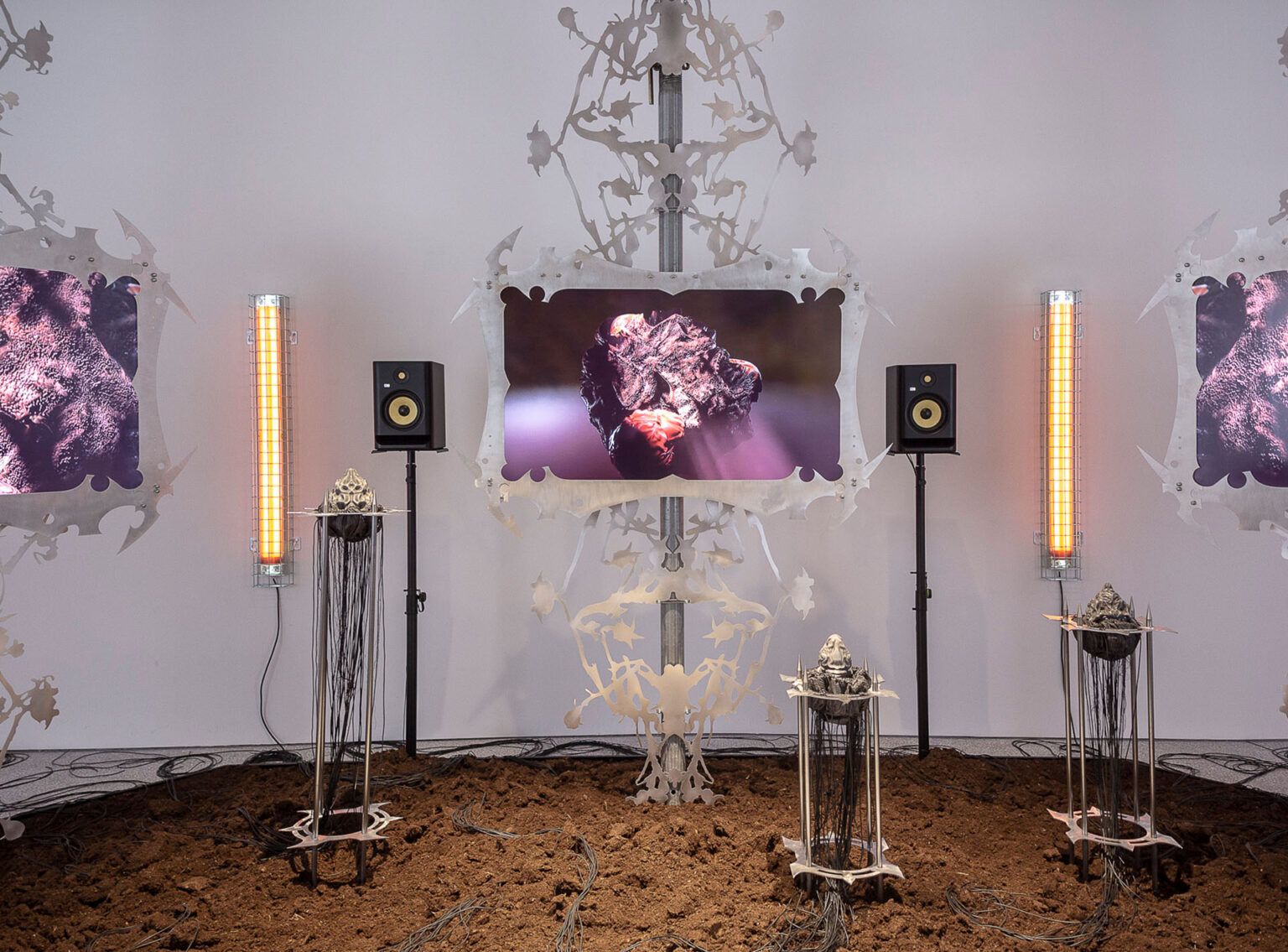Can you tell us about your artistic background, how the two of you met and decided to work together as an artistic duo?
We met almost 13 years ago and at the beginning we were mainly involved in the alternative graffiti scene. At that time the shared interest in exploring avant-garde aesthetics brought us to the idea of working together. Our wall pieces were inspired by obscure, dark music and were overfilled with weird ornaments and a freestyle interpretation of occult symbolism. At some point we just realized that our visual language should break from the flat surfaces and begin to exist as more dimensional and spatial installations. This was also the moment when we started to study at the Arts University in Poznań – Scenography and Fashion Design (Ula) and Artistic Graphics (Michał). After that we ended up at the New Media department from which we both graduated with a joint diploma project. This is also the department where we are currently running the Guest Studio program mainly focused around the vast theme of future landscapes. In 2016, while still studying, we got the invitation to our first artistic residency in Switzerland where we officially named our duo and established the practice that lasts until today.
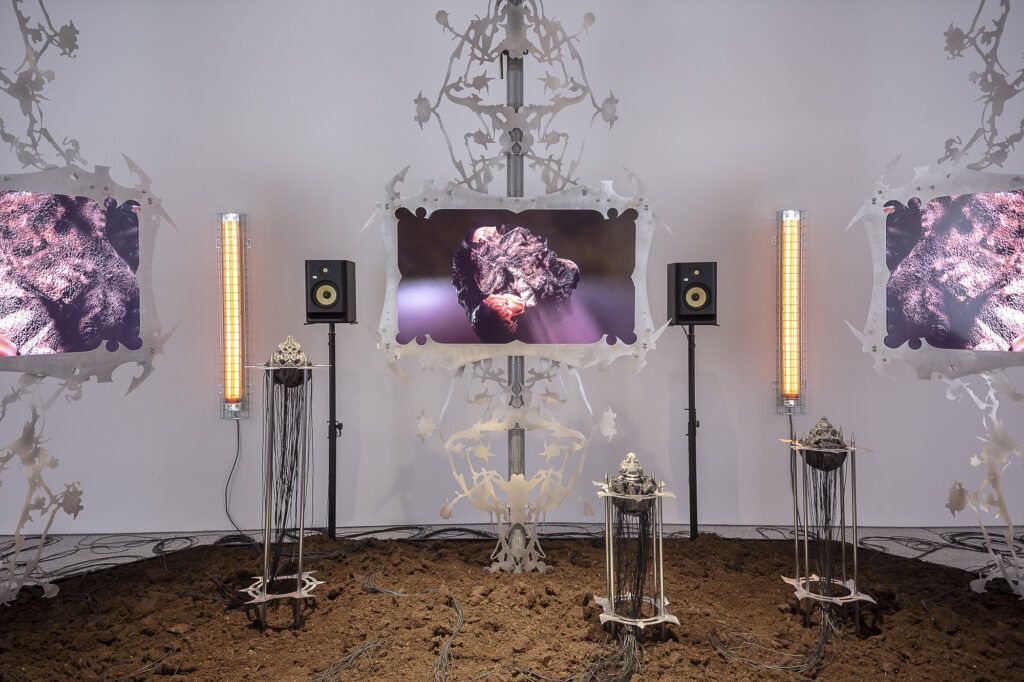
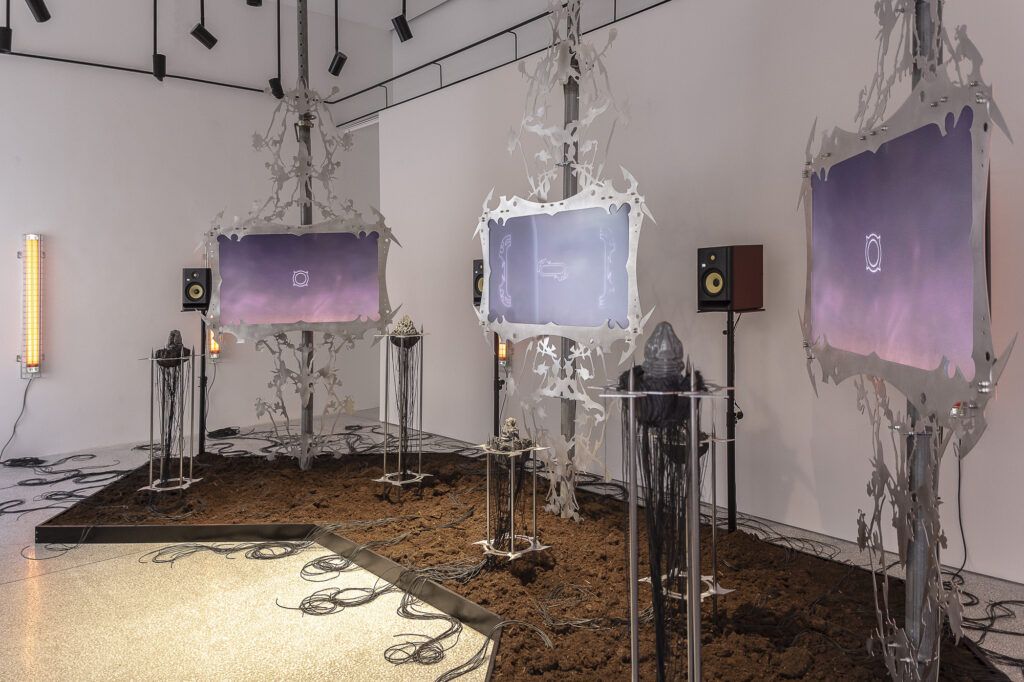
Your work often references catastrophic scenarios and the intersection of the past and future. How do you use art as a means of exploring these themes and what messages are you hoping to convey through your work?
Time fascinates us as a complex and chaotic phenomenon and we both believe that the future can influence the past as much as it depends on it. Looking at various ideas, or simply objects, things, and how they change over time, we can say that they are like ghosts that return, haunting our individual and collective imaginations. This nonlinear approach to time has brought our attention to the phenomenon of the catastrophe. We see it as a process that underlies our reality where moments of rupture and tranquility are indispensable components of the transformational flow of matter. The catastrophic model of understanding reality implies sensitivity and attentiveness toward the entanglements of the living and non-living beings of our planet. Art can definitely broaden our perspective on that, can go vast beyond the threshold of what is thinkable and rational. Art in this sense can be perceived as a channeling of the other side – where the excluded, the overlooked, the underprivileged, the weird and the nonhuman may be manifested.
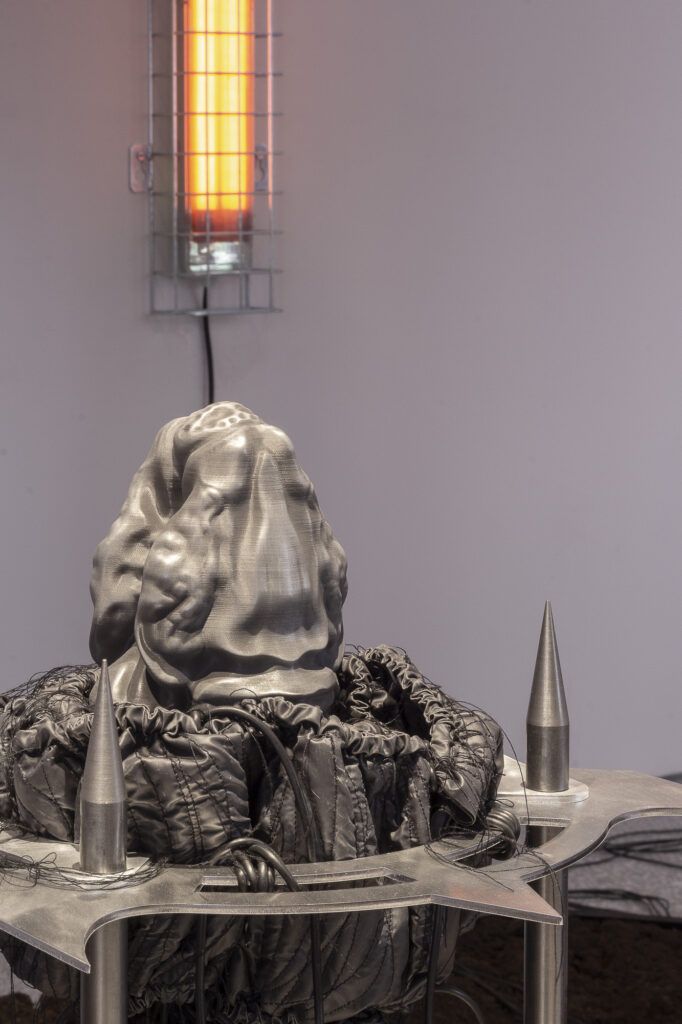
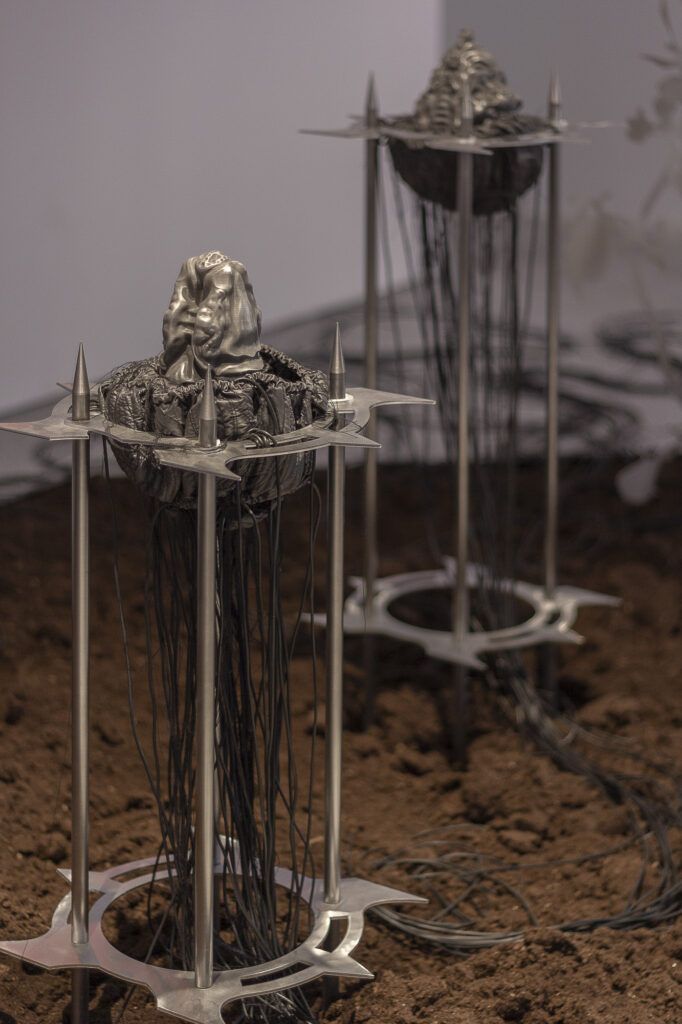
Many of your projects incorporate multiple mediums and materials to create complex, object-based environments. Can you speak to your creative process and how you decide which materials to use in your work?
Most of our works have the potential to merge into larger installations, which in turn are intended to build multilayered and immersive environments. In fact, the sculptural objects are the central forms, but very often their perception is enhanced by the carefully designed atmosphere. We have always liked to work “with space”, both by treating our works as site-specific, and by arranging spaces in which sound, light, how we move within it and experience objects/sculptures matter.
In doing so, we seek a certain level of immersion in the worlds we build. Sometimes it is much easier to feel them than to talk about them. This multi-sensory character of our environments is rooted in the very definition of “aesthetics”, reflecting the role of sensual cognition. We are interested in the moment when, at the intersection of different means, different materials, a fleeting impression of communing with something unknown is created, with something we can sense, something that is unsettling or soothing – something that would be difficult to express in words.
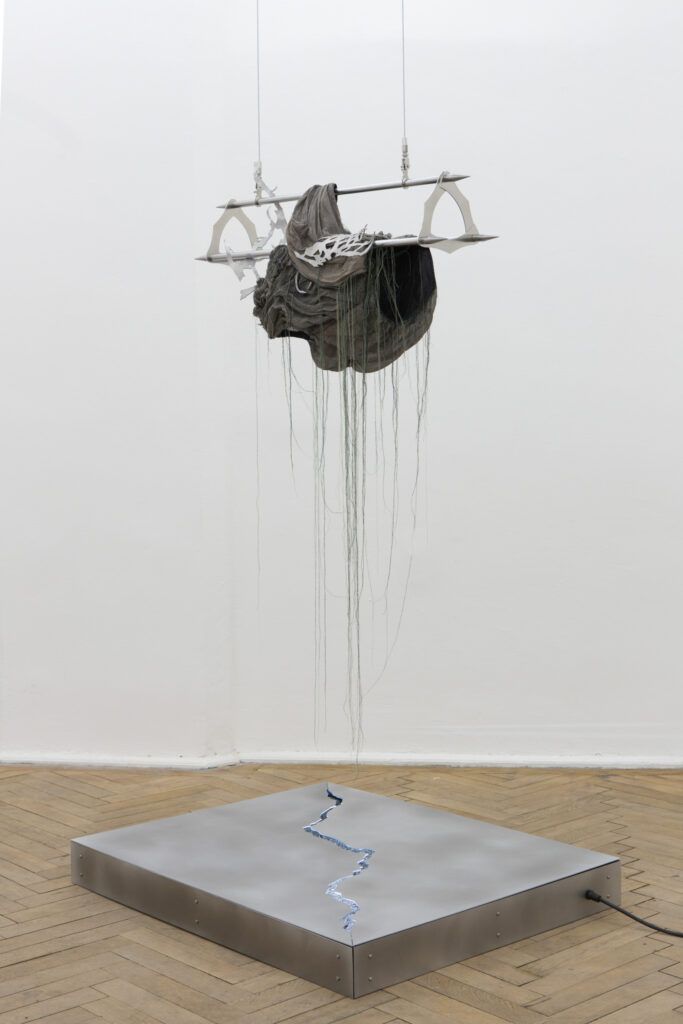

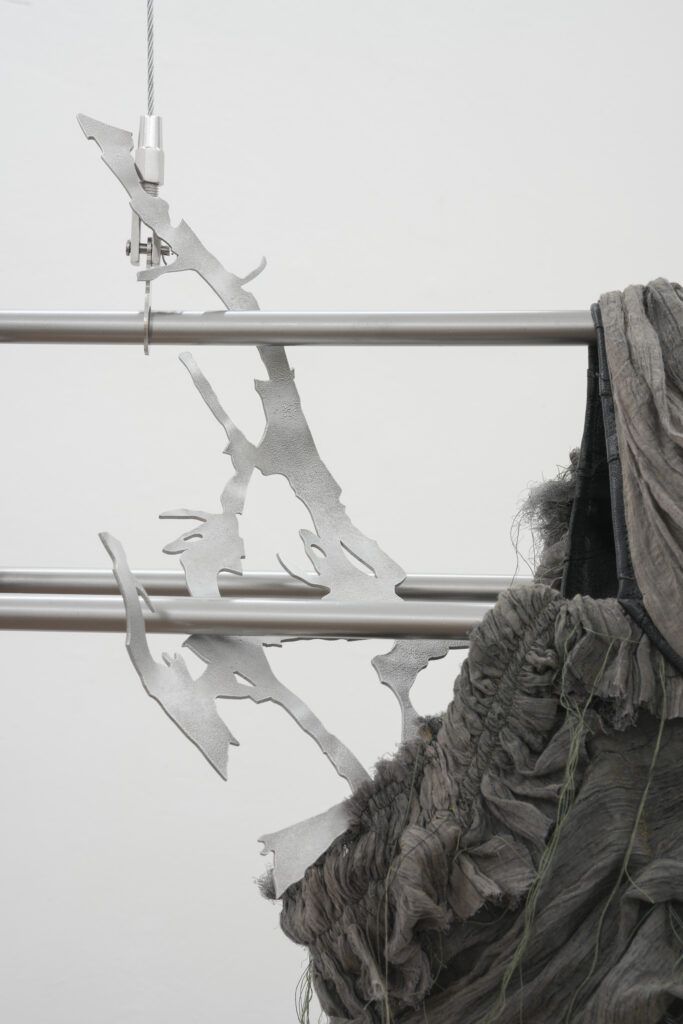
Materiality, and, in general, materials are also important to us as with them you start building a message as an artist. Using just the concrete properties of specific components instead of words. It’s interesting to observe how this non-verbal message interacts – how it stimulates different sensibilities. The fact that it sometimes arouses fascination, interest, that it seduces, stimulates, and in reverse sometimes even repels, builds distance.
In addition to relying on well-recognized meanings of specific materials, we also choose them very intuitively. Since it is important for us to combine industrial, digital and very new ways of production with more traditional ones, we play on the juxtaposition of what is surgical and sharp with more organic and delicate structures.
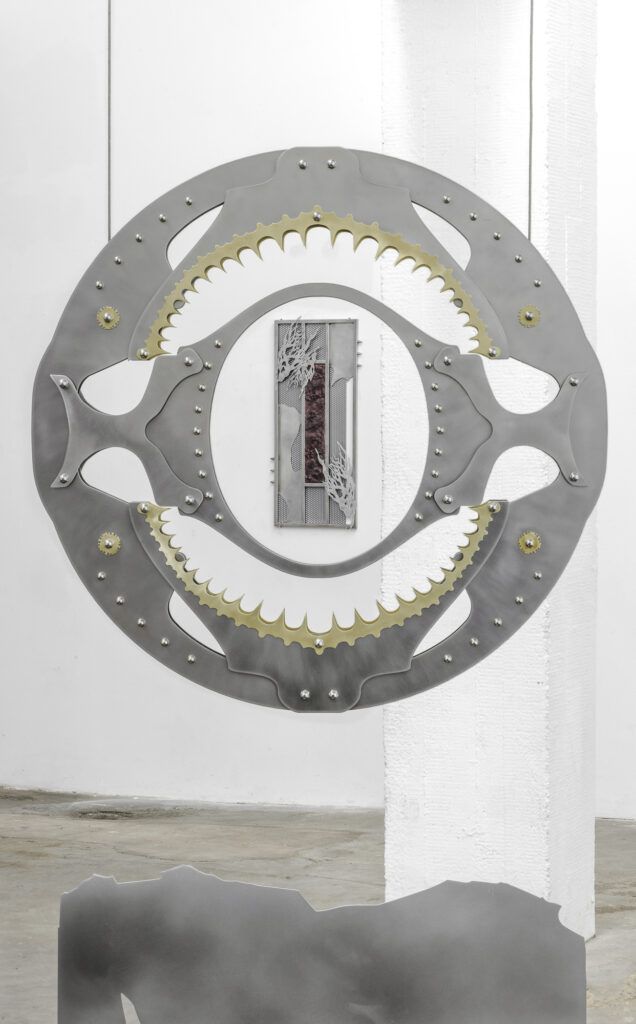
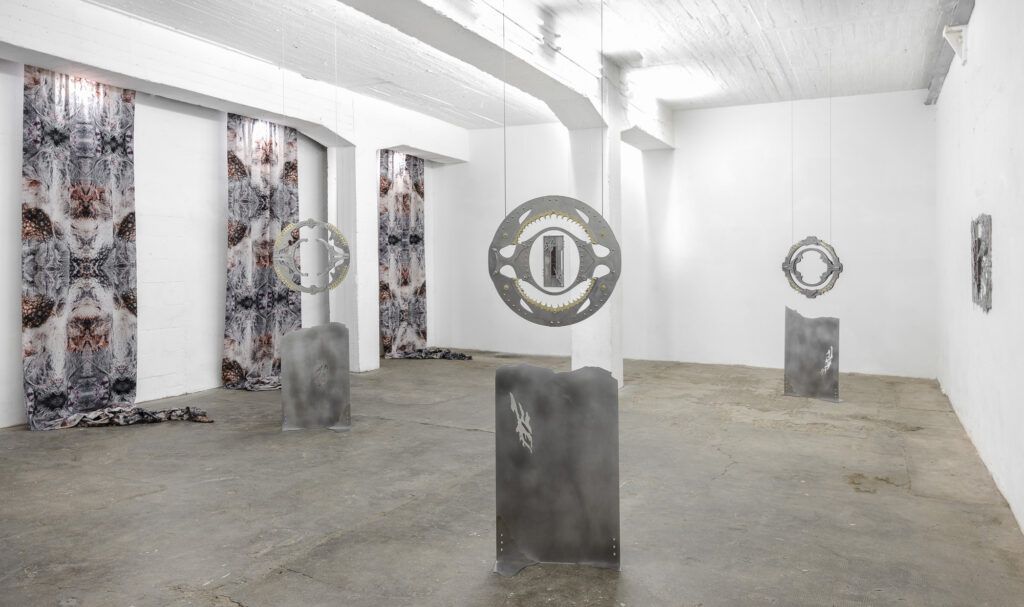
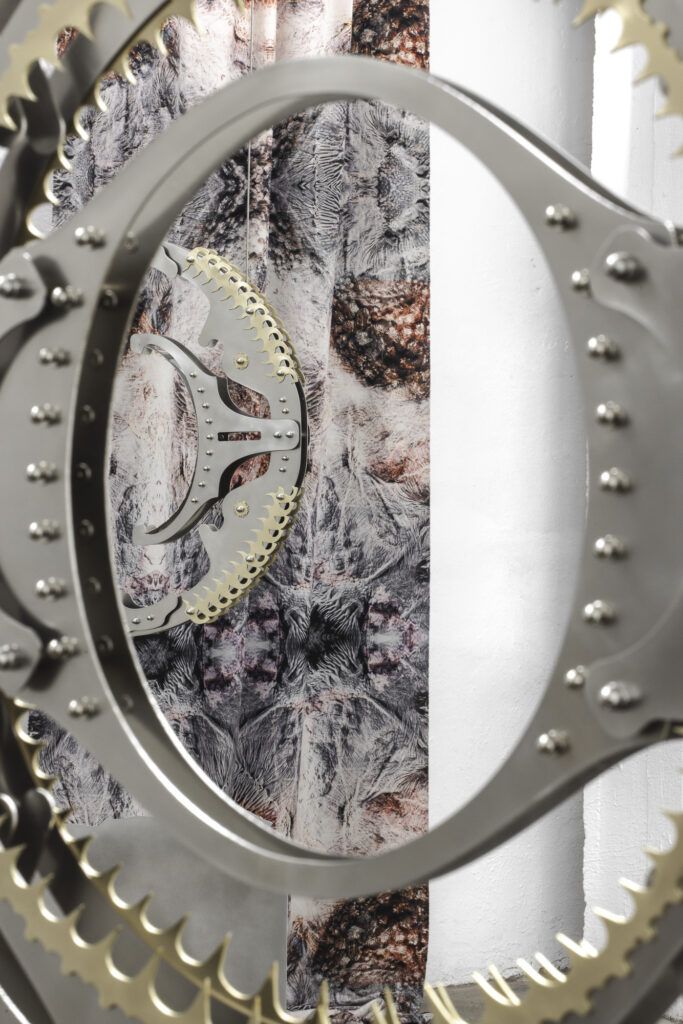
You use fiction as a working methodology in your artistic practice. How do you incorporate speculative fiction into your work and what impact do you think this approach has on the audience’s interpretation of your pieces?
What is most important for us while talking about fiction is that it’s always very much rooted in reality – it directly draws from the here and now. Without realizing that, it’s hard to talk about its role and function at all. The starting element of each fictional scenario is always a concrete situation, an emotional state, a need or necessity for change. Therefore, we treat these fictional scenarios as a kind of knowledge, and a kind of cognition – a very special relationship with the surrounding reality. They offer incredible opportunities, covering all the directions in which the world can develop, or could have in the past.
However, we would not limit ourselves here to so-called “science fiction” – our fascination spans across past myths, legends and what is present within them – archetypes, fears, excessive faith, perversions, obsessions and desires. It all remains sensitive also to current times – even if it’s supposedly banished.
We like to call our works “environments,” or “landscapes” that are a kind of a glimpse into the future. We imagine how ideas, symbols and materialities can transform freely, entering into complex relationships guided by a weird logic that is hard to decipher. It’s a bit like in Vandermeer’s Southern Reach trilogy, where the reality of the “zone” began to transform – creating terrifying yet beautiful configurations. We try to make our worlds poetic and allow for the widest possible interpretations.
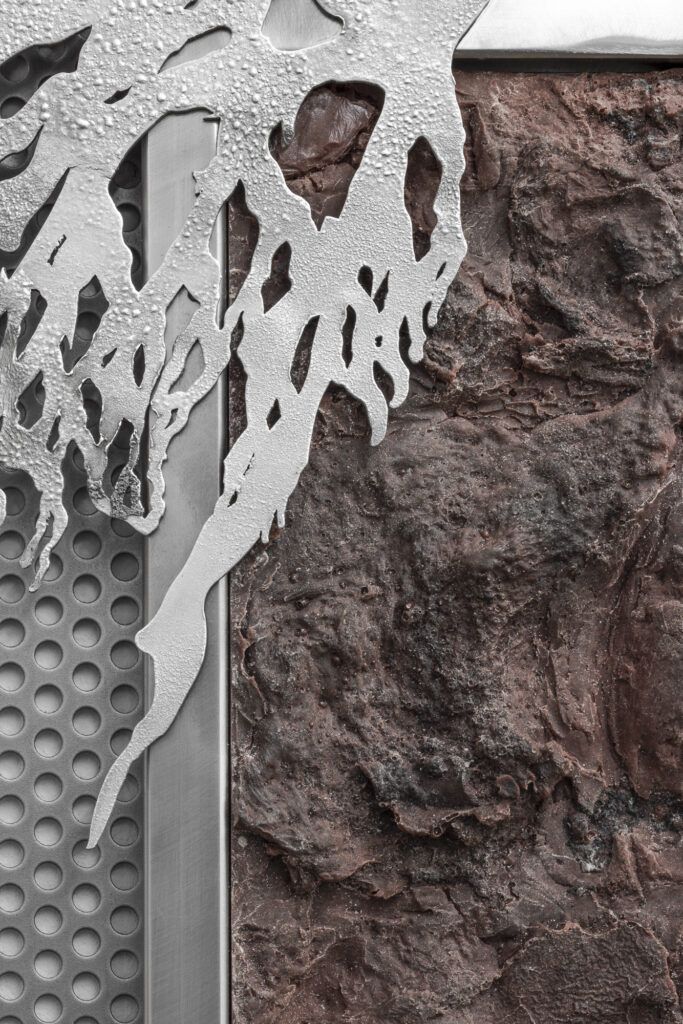

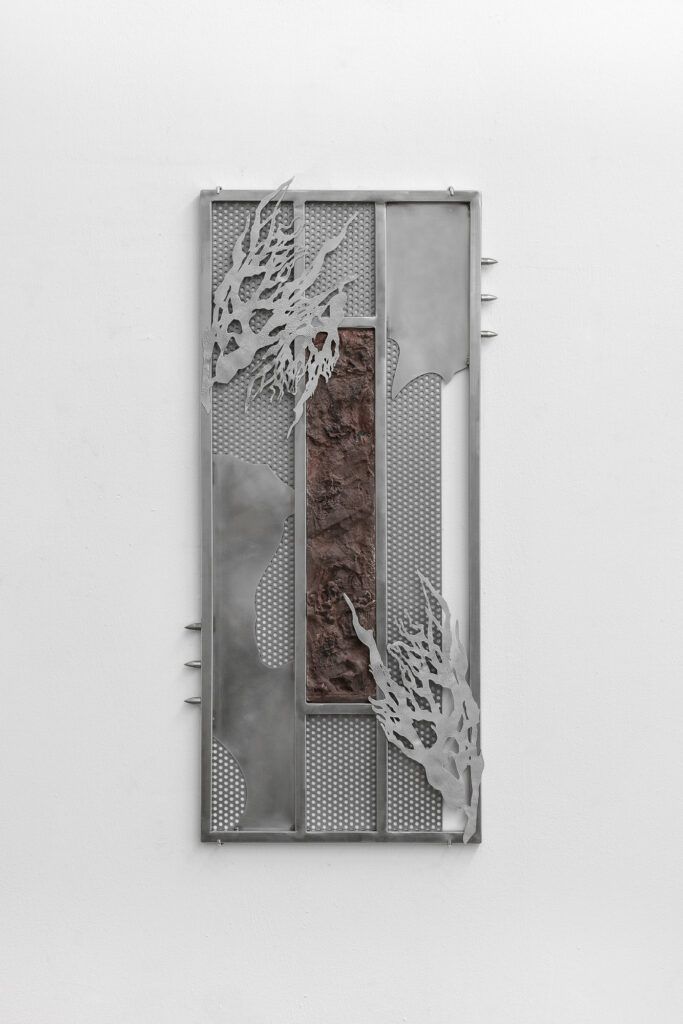
Your projects often explore the possibilities and limitations of dystopian and utopian futures. Can you tell the readers what are your visions for the future of art or perhaps a utopian or dystopian future of our planet?
We would like to see our art as a field for experimenting with fiction that helps reclaim the future – or that helps reclaim the openness for a multitude of futures. It is now very difficult to imagine an alternative vision of the world and art beyond the narrow horizon set by hegemonic and aggressive capitalism. This dominant scenario is unfortunately very fatalistic. We, however, still have a fragile hope that by unsealing our imaginations we will be able to build something as a counterpoint. Even if the environments we render are dark and repulsive they always contain elements of restoration and new life.
We also do not want to directly predict in favor of a particular utopia/dystopia, but rather assume a multiplicity of possible variations. The story that underlies our work is a story of non-hierarchical entities that function primarily on the basis of their mutual crossings, unions and alliances. It’s a bit like in Octavia E. Butler’s Xenogenesis series where humans must come to terms with the fact that their future will no longer be just autonomously human.
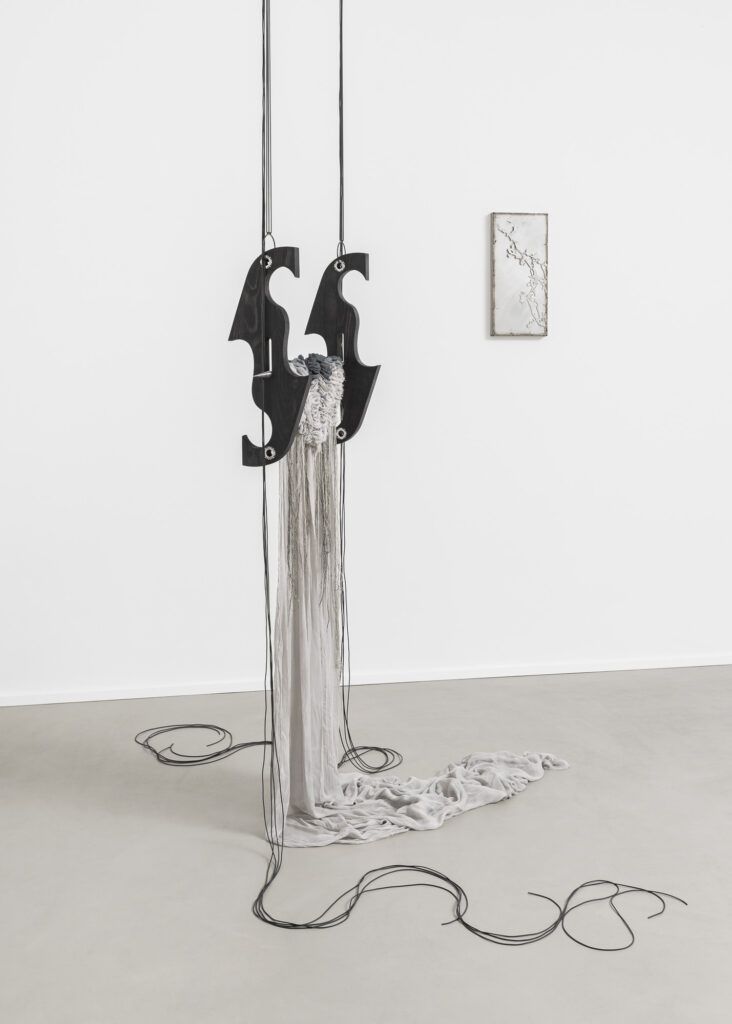
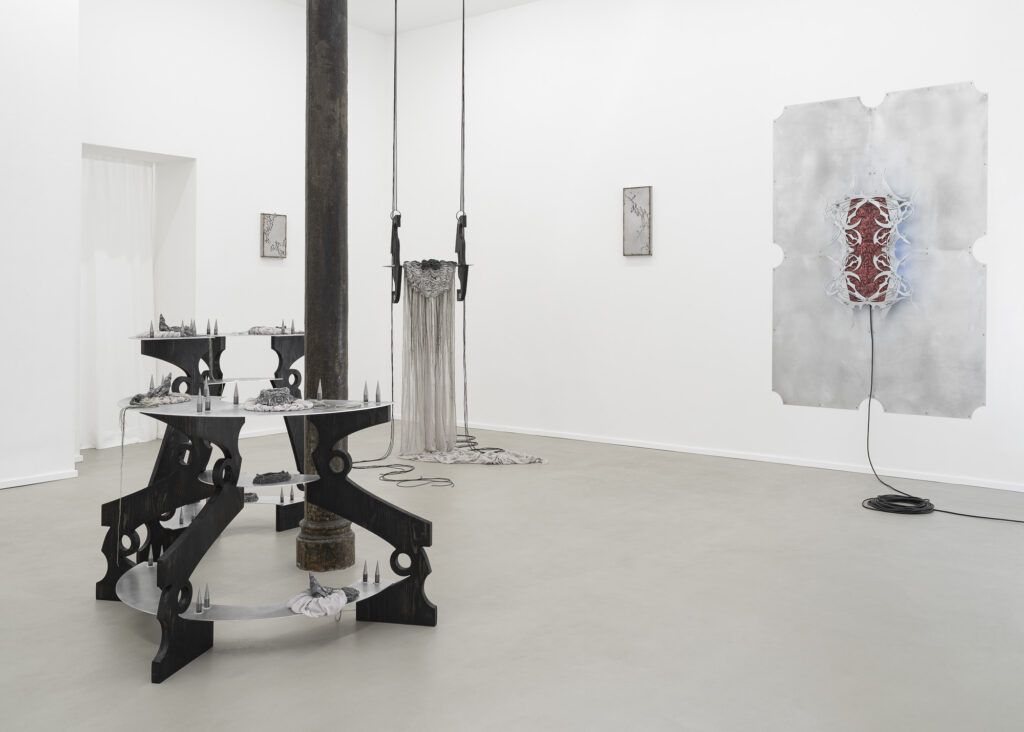
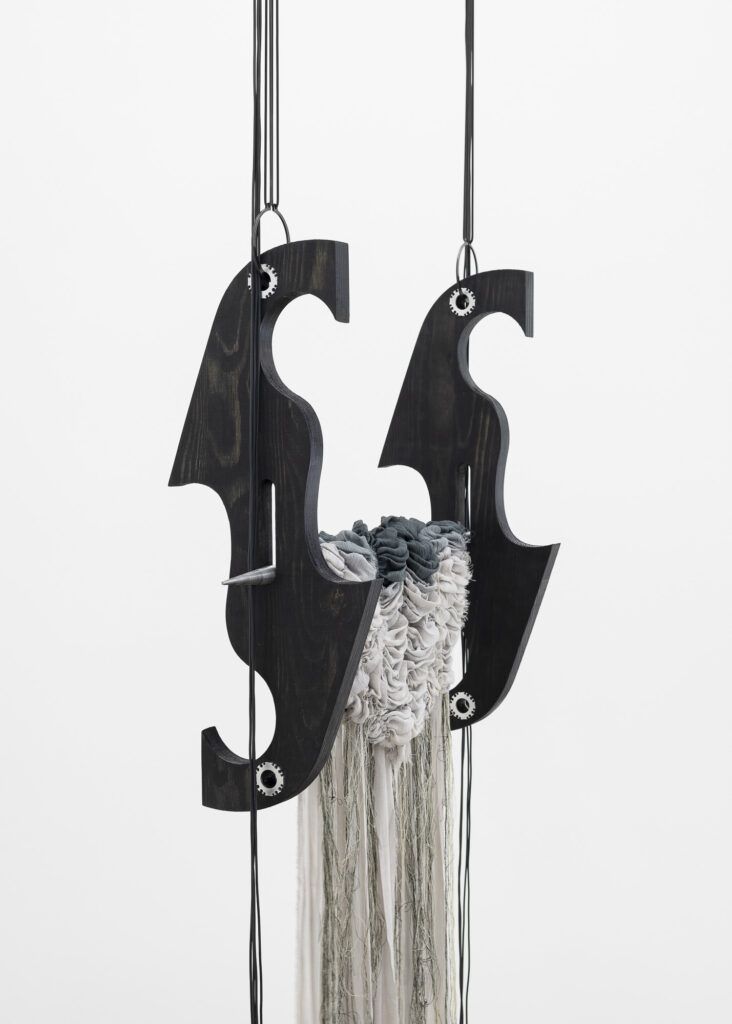
How do you hope your work will influence viewers and shape their perceptions of the world around them?
For us, artworks can generally give clues, glimpses or small directions, rather than evoke a specific change in the viewer. But maybe these little hints, these fascinations and tremblings are already in fact a perception change? An emotion, impression, feeling, spontaneous reaction. These are also the kinds of notions that we ourselves value in art. When some small thing, a visual detail, or maybe the whole composition arouses curiosity and simply inspires, triggers the flow of thought.
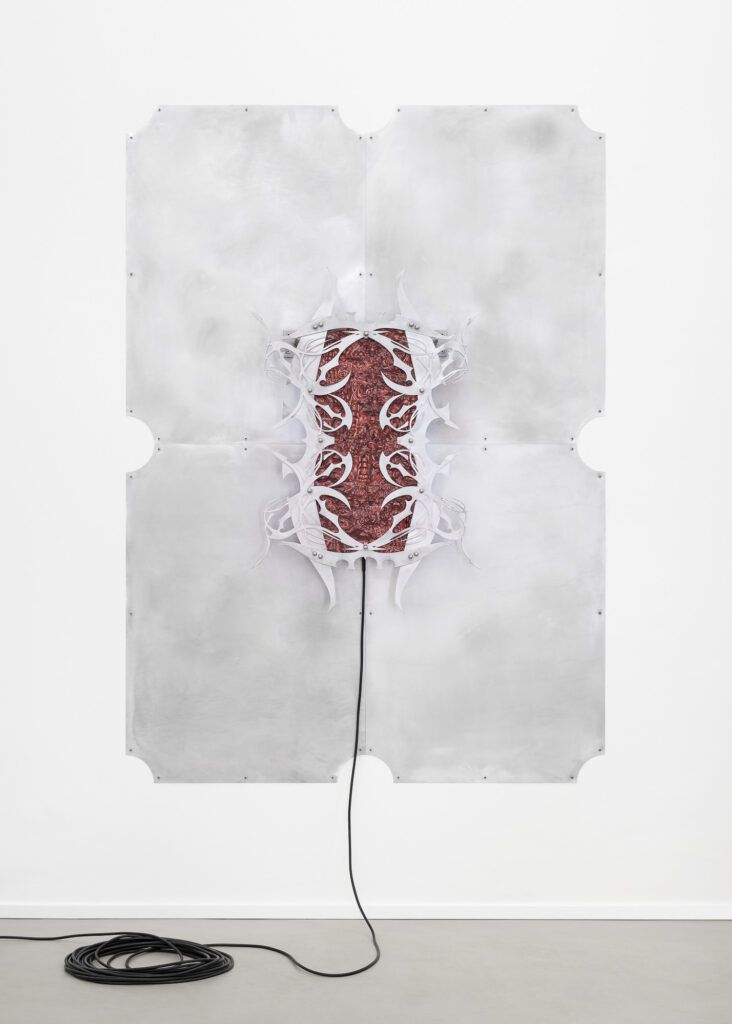
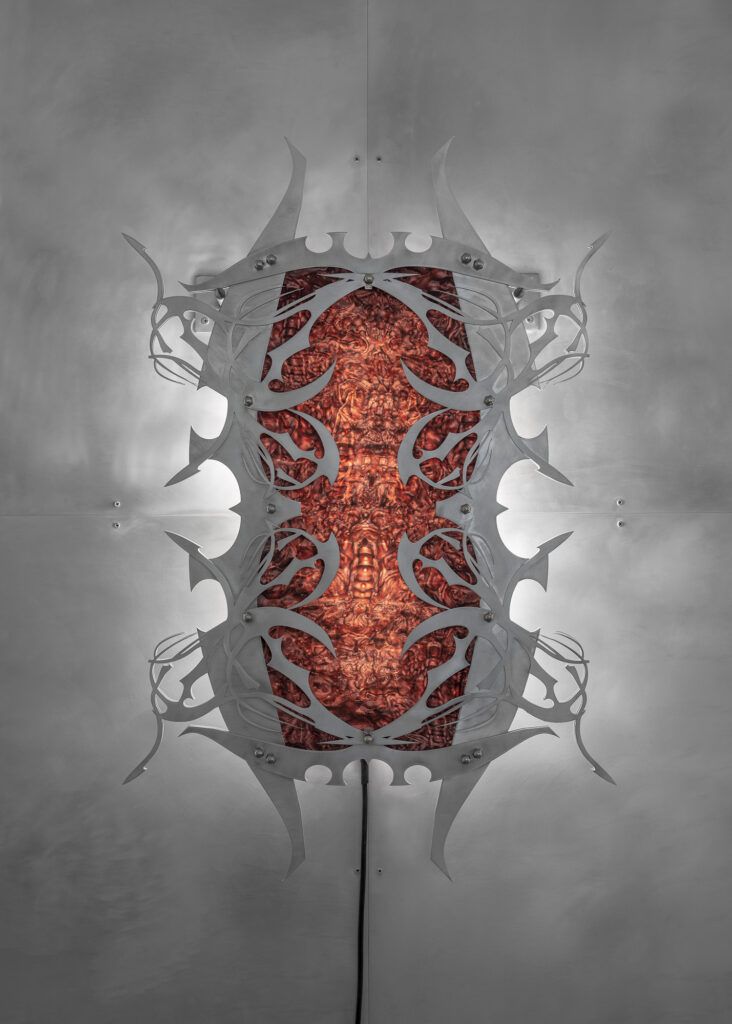
Can you discuss any upcoming projects or exhibitions that you are currently working on? What can viewers expect from your future work?
We are currently working on several new projects, all of which are related to the themes mentioned in this interview. At the forefront is the relationship between the past and the future, largely centered around non-human and speculative categories. We research survival methods taken from the world of plants and transform them into more or less fictional narrations and further – objects. We are also deeply inspired by the phenomena of hyperstition, as a kind of evocation and meditation. The nearest exhibition where we will be showing a new body of works will be our solo show at 66P gallery in Wroclaw. We plan to work on it, among other things, during our upcoming residency at Artists House in Brno.
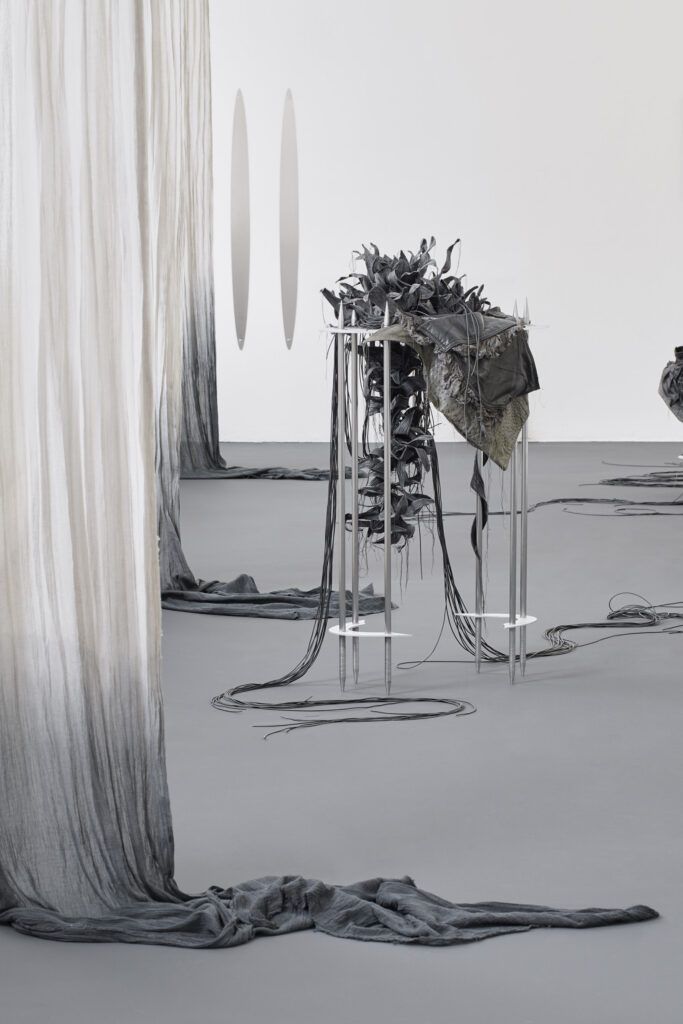
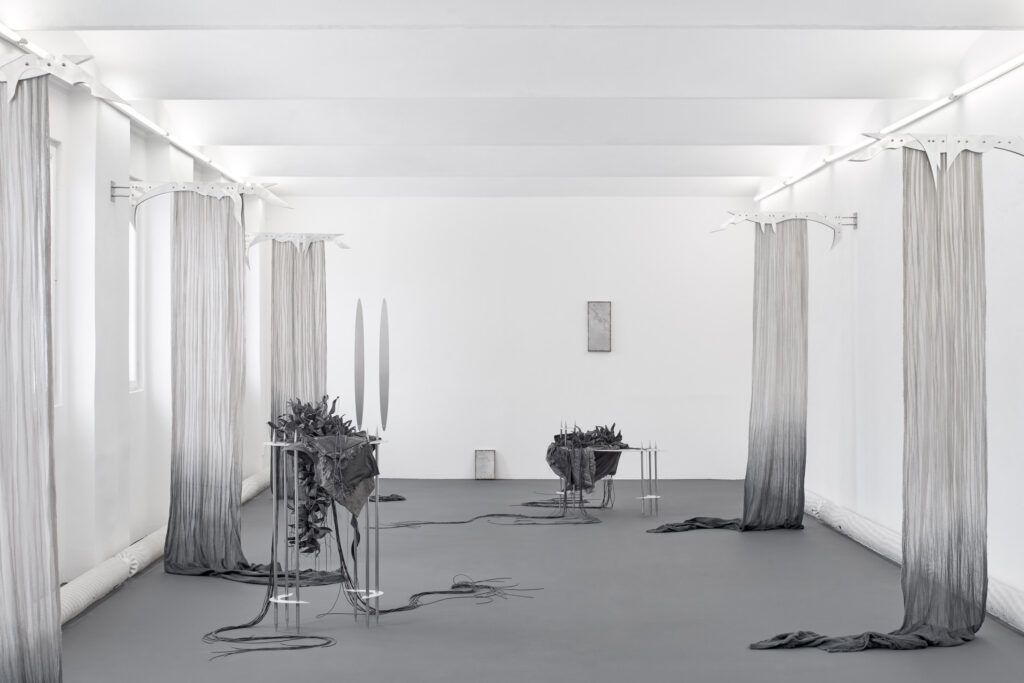
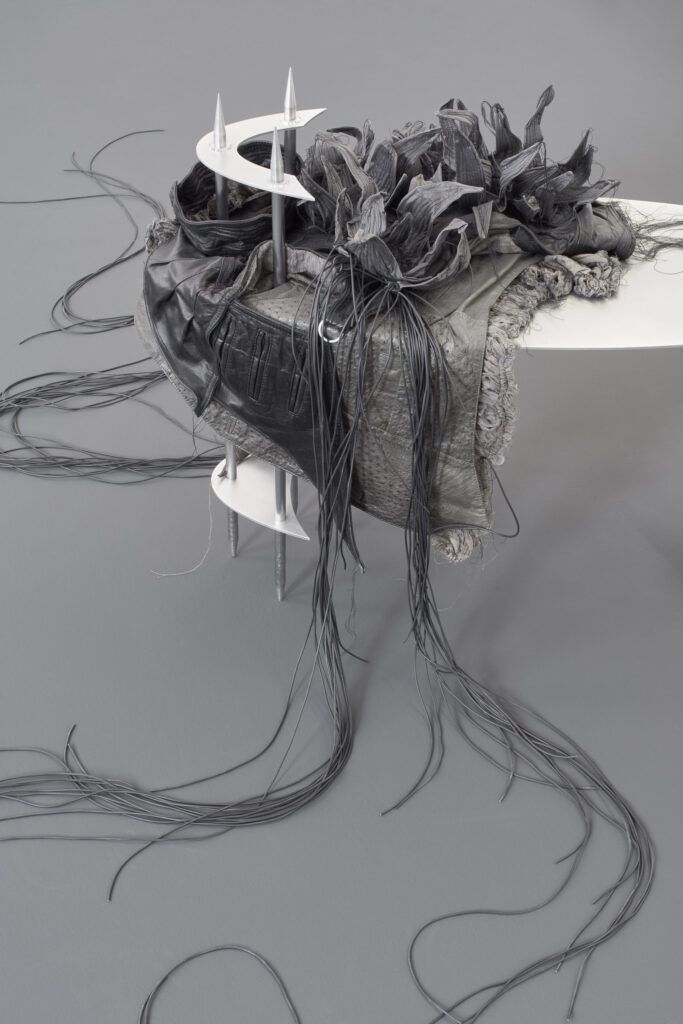
As we mentioned already at the beginning, this year we also run a Guest Studio program at the New Media department at the Arts University in Poznan. During the course we discuss topics that are close to our practice, but which also widely resonate with contemporary emotions, needs, moods and anxieties. We will be organizing an exhibition at Skala gallery in Poznań with a group of students, and that will be our first time curating (October 2023). We treat this cooperation as a very important experience, and we hope it’s motivating and inspiring both ways.
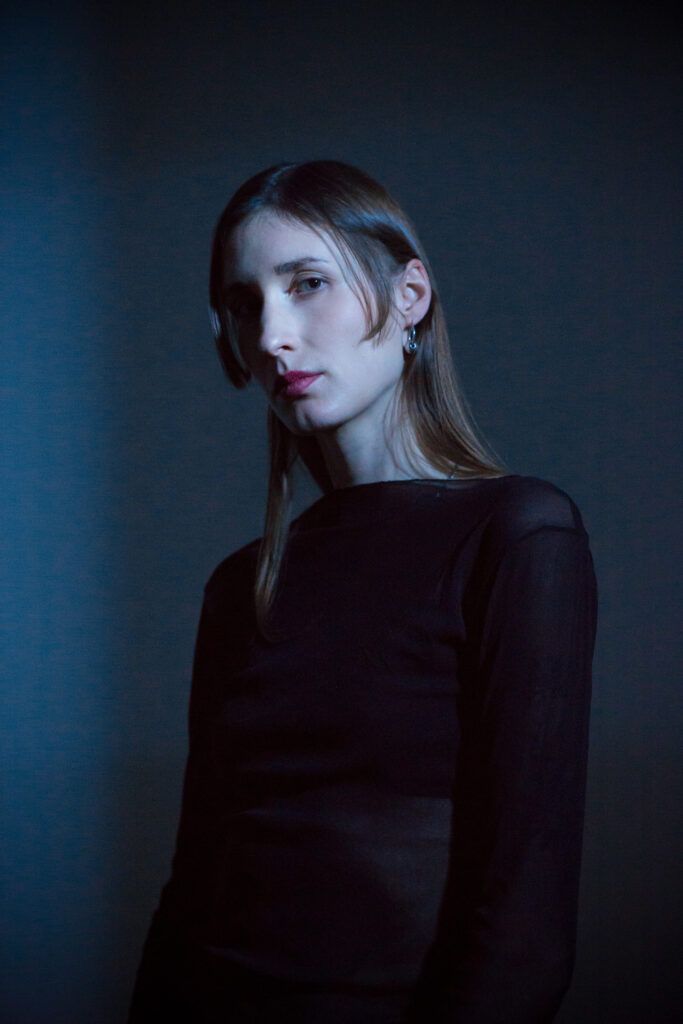
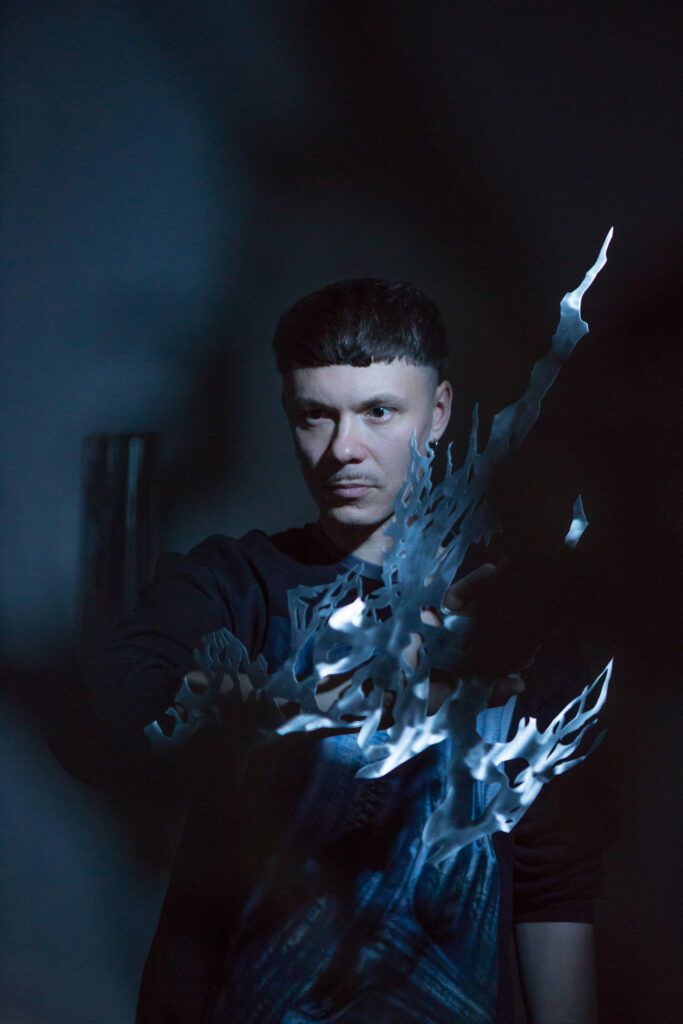
Photodocumentation:
1-4: Inside Job (Ula Lucińska, Michał Knychaus), Possibility we are poisoned, exhibition view, ISKRA DELTA – the 34th Biennale of Graphic Arts in Ljubljana, Slovenia, 2021 5-7: Inside Job (Ula Lucińska, Michał Knychaus), Premonition II, stainless steel, aluminum, linen, recycled leather, exhibition: Whispers from the Cracked Horizon, Šopa Gallery, Košice, Slovakia, 2022, photo: Tatiana Takáčová
8: Inside Job (Ula Lucińska, Michał Knychaus), Oracle Terminal, exhibition view, BSMNT Gallery, Leipzig, Germany, 2022, photo: Emilian Tsubaki
9-10: Inside Job (Ula Lucińska, Michał Knychaus), Continuity Circles, stainless steel, aluminum, exhibition: Oracle Terminal, BSMNT Gallery, Leipzig, Germany, 2022, photo: Emilian Tsubaki 11-13: Inside Job (Ula Lucińska, Michał Knychaus), Untitled (Fossilized) I, stainless steel, aluminum, polyurethane resin, dust and soot from a burned car, exhibition: Oracle Terminal, BSMNT Gallery, Leipzig, Germany, 2022, photo: Emilian Tsubaki
14: Inside Job (Ula Lucińska, Michał Knychaus), Breathing in the Shallows, exhibition view, eastcontemporary gallery, Milan, Italy, 2021, photo: Tiziano Ercoli
15-16: Inside Job (Ula Lucińska, Michał Knychaus), Swing (Breathing in the Shallows), wood, steel, aluminum, linen, rubber cables, exhibition: Breathing in the Shallows, eastcontemporary gallery, Milan, Italy, 2021, photo: Tiziano Ercoli
17-18: Inside Job (Ula Lucińska, Michał Knychaus), Get down, get down little Henry Lee and stay all night with me (edition of 2), aluminum, steel, digital print on silk, electricity cables, led lights, (2019), exhibition: Breathing in the Shallows, eastcontemporary gallery, Milan, Italy, 2021, photo: Tiziano Ercoli
19: Inside Job (Ula Lucińska, Michał Knychaus), And the door was kicked open again, exhibition view, FUTURA – Centre for Contemporary Art, Prague, Czech Republic, 2021, photo: Tomáš Souček
20-21: Inside Job (Ula Lucińska, Michał Knychaus), Anitya series (There are flowers that are born of mud), steel, aluminum, linen, silk, recycled leather, rubber, synthetic textile (2020), exhibition: And the door was kicked open again, FUTURA – Centre for Contemporary Art, Prague, Czech Republic, 2021, photo: Tomáš Souček
